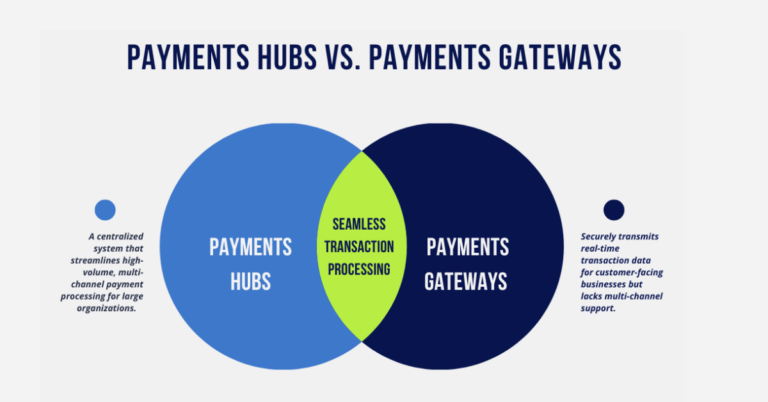3 Things to Know about Payments Modernization and Digital Banking
Faster payments and the user experience are key differentiators in allowing credit unions to remain competitive. They present both an opportunity and a challenge to businesses, especially considering consumers’ post-pandemic expectations when receiving goods and services. In Alacriti’s recent Payments Podcast, we had the opportunity to speak with Jeff Bucher, Senior Product Manager at Alkami about payments modernization and how it fits into an overall great digital banking experience.
Differences Between the RTP Network and the FedNowSM Service
The FedNowSM Service (expected to go live mid-year 2023) shares similarities to The Clearing House RTP® network, with the common goal of allowing banks and consumers to quickly and easily transfer funds 24/7/365. But what makes them different?
RTP was rolled out about 5 years ago by The Clearing House; it was the first new payments vehicle out since ACH and has continued to grow since. This network allows consumers to electronically transfer funds between two different accounts seamlessly, even on weekends and after business hours. It can be used for payroll, bill payments, insurance, and even completion of retail transactions. Similar to the RTP network, the FedNow Service will also provide financial institutions with the ability to provide an instant payment service, allowing payments to be completed and accessed 24/7/365. Both of these rails use ISO 20022 messaging to communicate and send data along with the payments.
One key difference between the two is that FedNow will open instant-payment services to even more financial institutions. They also differ in transaction limits. “We got a million dollar max transaction limit for RTP”, Bucher explained “FedNow is starting out once they go live, at least from what we’ve heard at this point, about a $500,000 max limit.” The two networks also differ when it comes to backing up the transactions. Financial institutions will keep the funds with the Fed and use FedLine. Whereas with RTP, funds are held by The Clearing House.
Significant Use Cases
One of the most beneficial use cases surrounding payments is account-to-account (A2A) money transfers. A2A payments are defined as the transfer of funds from one account to another one owned by the same individual or entity.
“This is what we are putting in place with Alacriti and we’re going to put it native into our online platform at Alkami” said Bucher, “Right now when you do an account-to-account transfer, if you go outside of the current financial institution you’re with, you have to do ACH and, and it’s gonna be a 1-2 business day experience where you have to wait for that payment to show up. With instant payments, it would show up immediately.”
Additionally, there are also many real-time payments use cases within the business-to-business (B2B) space for payment requests, invoices, and payroll. The ability to move money quickly, know exactly when the transaction occurred, and minimize the risk of disruptions, can add important value to businesses. A growing number of companies have gig workers who need to be paid daily, so it makes sense to use the FedNow Service and the RTP network for payroll. “If you’re paying gig workers or temp workers, they want their payment that day and maybe even that hour so that they can move on and make sure that they have the money in their account. It’s also a big incentive for them to do business or to work for that company that is doing business in that area,” said Bucher. “Regular employees want to see their payroll as quickly as possible. And for a business to be able to send it out and be done with it and it’s final, that’s a great benefit.”
Faster Payments are Expected Now
User expectations have changed considerably in the last few years, and have particularly accelerated with the pandemic. Individuals are focused on the ease of timing and convenience, expecting instant gratification.
Bucher highlighted this further in the ideology that he referred to as the “iPhone experience,” which he explained as, “you go onto your iPhone, you pull up an app, you want to be able to do something right away. Banking is part of that. So, a lot of people are looking to bank where they can have the digital experience at their fingertips. They expect a streamlined interface, robust capabilities, and want to pay their bills online.”
This expectation of having modernized payment solutions isn’t just expected by consumers, businesses are shifting to anticipate this as well. “Businesses are very focused on faster payments as well. They really want to understand how they can pay their employees, their customers, and even their vendors a lot more quickly and securely,” said Bucher. “They want to do it cheaper as well. Real-time payments are just expected now.”
Modernized bill pay options are crucial for financial institutions to cut costs and reduce operational overhead, which is what a lot of financial institutions are looking to do at this particular point. This is where having a good user experience also becomes critical. People want to move money easily and cheaply, but they also want safety, security, and accuracy within their payments as well. Similar to a seamless digital experience, faster payments are now expected by both consumers and by businesses.
Hear more about payments modernization and digital banking in our podcast with Jeff Bucher, Senior Product Manager at Alkami.
Alacriti’s centralized payment platform, Orbipay Payments Hub, provides innovation opportunities and the ability to make smart routing decisions at the financial institution to meet their individual needs. Financial institutions can take full ownership of their payments and control their evolution with ACH, Wire, TCH’s RTP® network, Visa Direct, and the FedNowSM Service, all on one cloud-based platform. To speak with an Alacriti payments expert, please contact us at (908) 791-2916 or info@alacriti.com.




